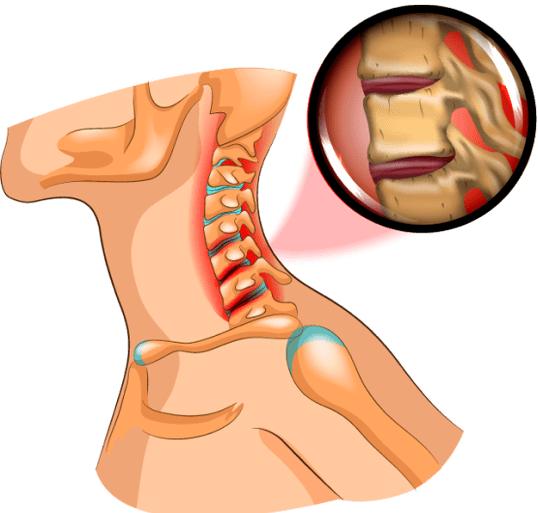
Osteochondrosis is a medical term that describes the integrity of invading the surface of bone cartilage.In most cases, the disease is associated with damage to the intervertebral disc.
The intervertebral disc is a shock absorber that softens the pressure on the spine under load.Osteochondrosis can worsen the quality of life, causing noise and pain in the back, neck, head, and ears.
There are two perspectives on diagnosis.Experts abroad include childhood and adolescence diseases.It is believed that because their bones are in developmental stages, they are more common in children.Doctors diagnose osteochondrosis mainly in patients aged 25-55.The symptoms, causes and types in both cases are the same.
How to determine osteochondrosis?
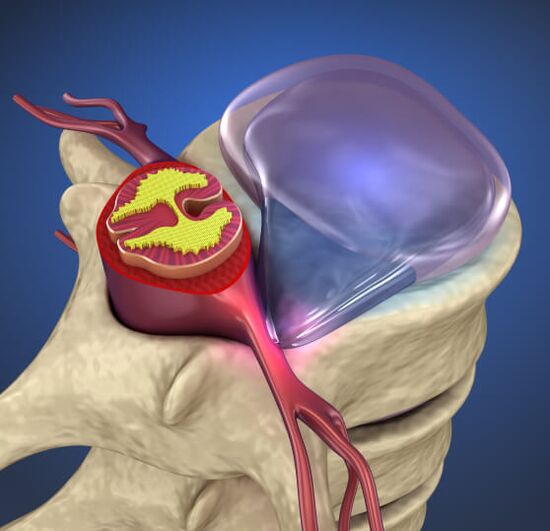
- Are there constant or periodic back pain or muscle tone?
- Is there a "goose outdoor" on the lower back or on the neck?
- Do you think the back is “shooting”?
- Will pain occur when you raise your hand or shake your head to the side?
- Is there any periodic dizziness?
- Noise, nausea?
If at least one answer is yes, an expert should be contacted for research.If the diagnosis shows a violation, the doctor will prescribe treatment and help protect yourself from severe and painful symptoms.
What causes bone cartilage
The mass incidence of osteochondrosis is due to the fact that people are in an upright position in most cases.In this case, the spine and discs add to the load.If sitting, lying and standing is wrong, the CD loses its ability to depreciate.
Over time, the shell of the intervertebral disc will crack and a hernia process appears.They begin to transport blood vessels, spinal cord roots, or the brain itself.As a result, pain occurs and reflex tension in the muscles.
The risk group included middle-aged and older people.Office staff, professional drivers, high-growth people often face this disease.Risk factors for obvious violation symptoms may become:
- Flat feet
- Genetics
- Too much weight;
- Hypoemia.
Reasons for violations in joint cartilage:
- Work with heavy cargo
- The position of sitting, standing or lying is incorrect.
- Injured, over-structured.
- Excessive burden during exercise.
- Air humidity increases and low temperatures.
- Activities related to frequent changes in body position
Types of osteochondrosis
Osteochondral disease can develop in any spine.According to the location, the disease is divided into: cervix, chest and waist.In 50% of the cases, the last type was found.
Lumbar vertebrae disease
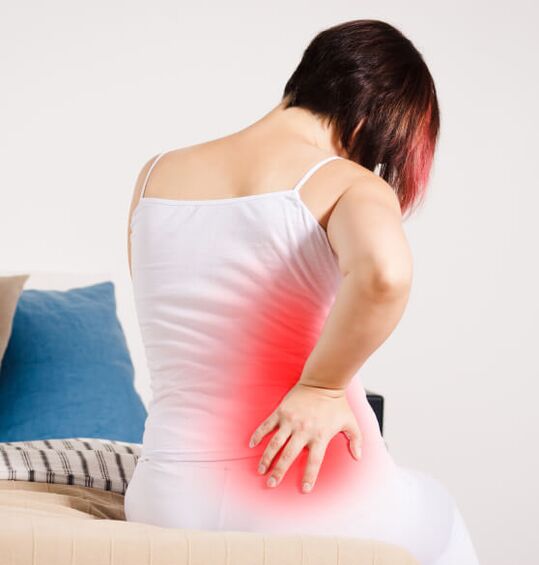
A similar diagnosis was established for men and women.The cause of this is the increase in load when walking, running, physically exhausted, and long-term seating.The lumbar spine is composed of 5 vertebrae, some of which are elastic.If no exchange process occurs, the disc loses its properties and causes pain.
symptom:
- Stupid or sharp pain in the lower back, which can be aggravated when moving.
- Leg pain, pelvic body, ac bones.
- Violation of liquidity or sensitivity.
- During the acute course of the disease, the muscles in the legs atrophy.
Lumbar osteochondral disease must be treated.In the absence of treatment, dangerous complications may occur: Ishia, hernia, hernia.As a result, the natural blood supply of the spinal cord is disturbed, resulting in lower limb paralysis.
Neck bone and chondropathy
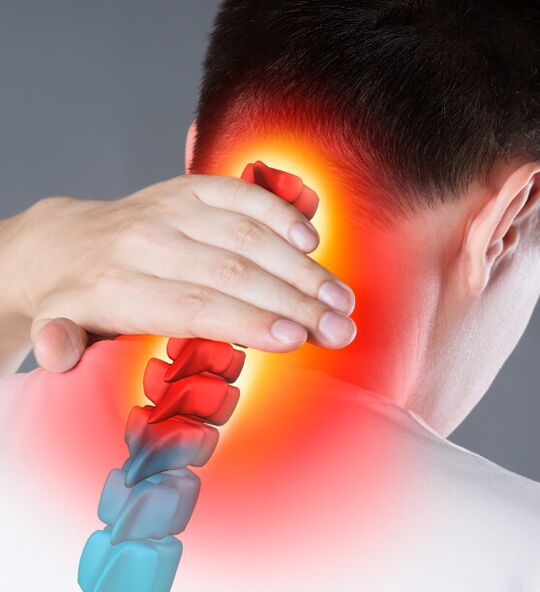
"You must turn your head," the doctor called.Therefore, you can avoid dangerous diagnosis of osteochondrosis in the cervical spine.The neck is the most moving part of the spine.This part consists of 7 vertebrae.This disease occurs due to violations of the metabolic process in the body due to the presence of salt in the neck or frequent discomfortable positions in the head.
symptom:
- Headache
- Heart pain
- "Fly" flashing in front of my eyes
- Hearing impairment
- Crystals on the neck
- Hand or shoulder pain
- Numbness of limbs
Experts point out that the disease is the most dangerous one because its causes may violate blood circulation in the brain, migraines, dystonia and more serious diseases.
Sternum chondrochondrosis
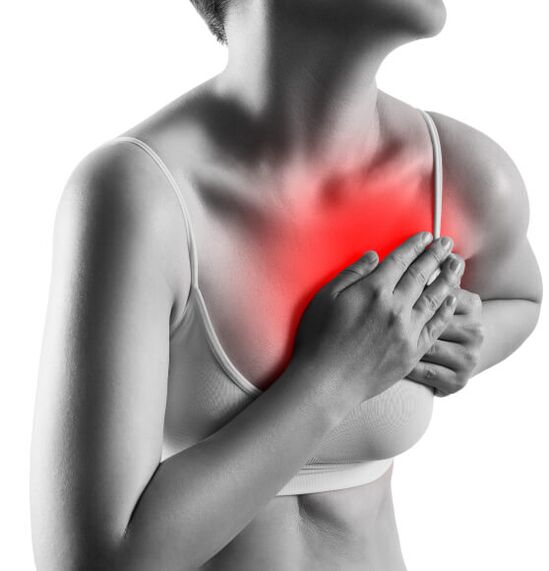
Due to inactive vertebrae, thoracic vertebrae violations occur less frequently.Many people who work in a lot of manual labor or have a sedentary profession experience the pain of appearing in this field.The cause of osteochondrosis may be a disturbing exchange process, with increased load on the disc.
symptom:
- Pain or compression sensation in the chest area.
- Pain between the shoulder blade bones when raising your hands.
- Skin sensitivity disorder.
In acute violations, two symptoms may occur: Dorsago and back pain.Dorsago is accompanied by acute chest pain and shortness of breath.In the case of back pain, the vertebrae pain in the department is not too great, but it gradually increases.The disease is often confused with other chest pathology: heart attack, pneumonia, angina, etc.Diagnosis is performed only by experts based on examination and research.
Stages of osteochondrosis
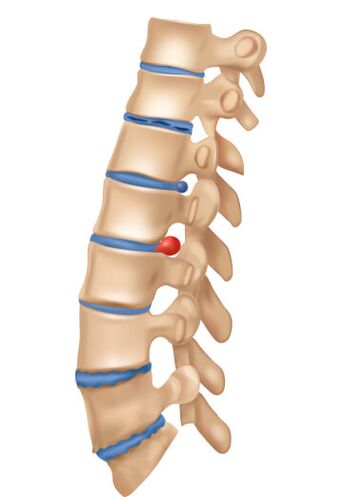
In the first stage, there were no obvious symptoms.With frequency, spinal discomfort occurs, which is associated with fatigue or overexercise.The disease can be detected in a preventive examination, i.e. X-ray or CT.
The second stage is accompanied by pain, as the destruction process of cartilage tissue begins and the gap between the intervertebral discs decreases.The pain at this stage is eliminated by the medication prescribed by the doctor.
In the third stage, spinal deformation begins: the annulus of fibrous fibrous and a vertebral hernia occurs.With the rightly prescribed treatment, you can still improve your spine condition.
The fourth stage is an irreversible change in the spine, in which it is difficult to move to a person.Between the vertebrae, the bone tissue connecting the vertebrae grows.In most cases, similar osteochondrosis can lead to disability.
Diagnostic method
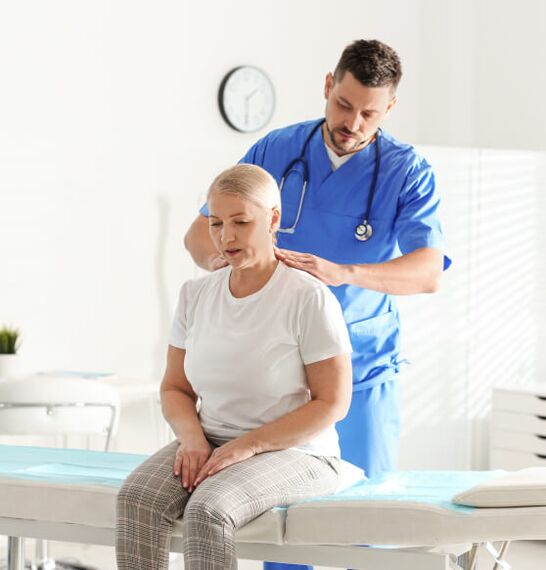
To determine the degree of the disease, check for sensitivity and reflexivity, the doctor performs a physical examination.In addition, blood and urine tests were performed to study calcium metabolism indicators.
For accurate diagnosis, diagnostic methods are used:
- Ultrasound of the ship.Determine the extent of blood flow damage in the vertebral artery.
- X-Ray of the spine.
- CT.Construction of three-dimensional images of the study area to identify smaller vertebrae displacements.
- MRI.The state of soft tissue is studied to evaluate the state of the spinal cord and visualize the internal structure of the disk.
treat
Osteochondrosis is fully treated.The main purpose of treatment is to suppress pain, eliminate tension in the muscles, and constraints on movement that occur due to pain.It is important not to learn by yourself, but to take advice with experts and follow them.
- Drug Therapy
- physiotherapy
- Surgical treatment

To treat the spine, doctors prescribe non-replacement anti-inflammatory drugs that help relieve inflammation and swelling.Musodorelaxant is responsible for reducing cramps in the muscles.Ointment is used to relieve pain.To protect neural tissue, antioxidants and vitamins can be prescribed: They slow down the damage to bone tissue and reduce calcium loss.
The effectiveness of treatment can be achieved by combining drugs with physical therapy procedures: electrophoresis, laser, magnetic therapy, treatment with mud and electric current.In addition, prescription massage and manual therapy can be given.Due to contraindications, a set of procedures was identified.
In rare cases, surgical intervention in osteochondral disease is necessary.There are many nerve endings in the spine that are responsible for the work of the entire body.The risk is high, so surgical treatment can be prescribed when conservative methods do not have proper effectiveness.
prevention
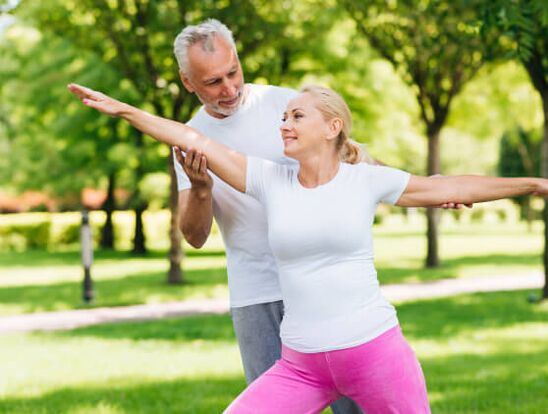
By following prevention methods, spinal health can be maintained and symptoms or complications of osteochondrosis can be prevented:
- Consumption of enough water;
- Weight control;
- Eat foods rich in collagen;
- Choose an orthopedic mattress that supports the body;
- Regular exercise.
You can try alternatives: acupuncture, qigong or massage.Before starting any procedures, you should consult your doctor to ensure that you keep your musculoskeletal system healthy.
















